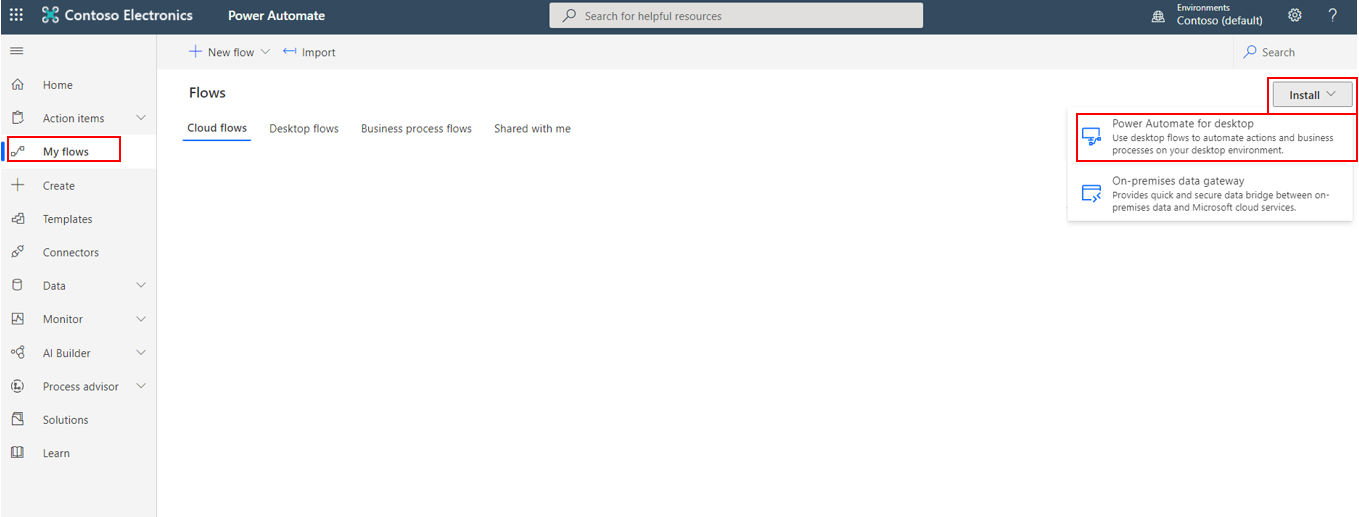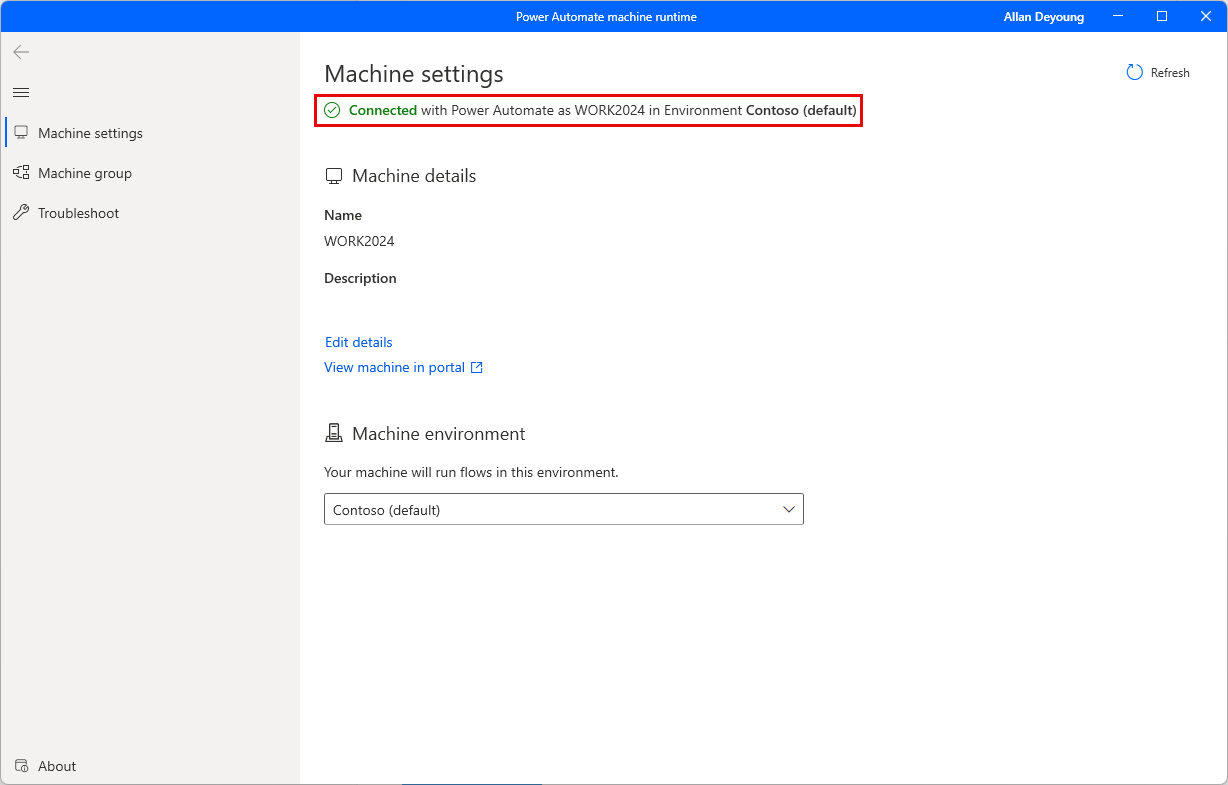Setup process in Power Automate for desktop
Creating and running automation systems in Power Automate requires that you have access to make changes to the environments in your tenant and that you have the appropriate licenses and permissions. If you don't already have admin access to a valid tenant, you might want to start a free trial. Also, you need a Power Automate user plan with an attended RPA license to complete this module. You can sign up for a free trial if you don't already have this license.
In this unit, you complete two tasks:
- Set up a trial Power Automate environment. An environment is a space to store, manage, and share your organization’s business data, apps, and flows.
- Set up the Contoso Invoicing application, which you use throughout the Automate processes with Robotic Process Automation and Power Automate for desktop learning path to help you explore and learn the concepts and actions that are available in desktop flows.
If you completed the Build your first Power Automate for desktop flow module, you can skip to the next unit.
Create a trial environment with a database
After you sign in to a valid tenant, go to the Microsoft Power Platform admin center. You need to create a trial environment with a database. Select Environments and then select your automatically created environment: the Demo (default).
If you're using an existing tenant rather than creating a trial for this exercise, you can use the default environment. Or you can create a new one to keep it separate from your existing solutions.
Once you're in your chosen environment, you can add a database by selecting Add database. In the next dialog, specify the requested values but keep the defaults and then select Add. You might be prompted to sign in again before creating your database. Afterward, your database should provision appropriately.
Creating your database might take a minute or so; afterward, you can continue to the next steps.
If you're using a trial environment, consider setting up a profile in your browser to prevent you from being signed out of your existing Microsoft account.
Create new environment in tenant
If you're creating a new environment in your tenant, the dialog is a little different. In the New environment pane, you add a name, select a region, define the type (Sandbox is the default), and then you toggle the Add a Dataverse data store? to Yes. Then you select Next.
The Add Dataverse panel prompts you to add a Security group for your environment. Though we're not going to get into it during this module, the Environmental Security group allows you to restrict access to the environment to specific members of your tenant, or allow everyone access. The other settings are optional. Once you select a Security group, you can create the Environment by selecting Save.
Note
In a demo tenant, there are size restraints in that creating a Dataverse database requires at least 1 GB of space. If you do not have that, you won't be able to create a new environment.
Software installation
The following exercises require you to install various software on your computer. The following steps guide you through the download and installation of Power Automate for desktop (including Power Automate machine runtime) and the Contoso Invoicing app.
If you already installed Power Automate for desktop, ensure that you're running the latest available version.
Power Automate for desktop
Go to Power Automate and sign in with the account that you used to create your environment and database. When you sign in, select My flows > Install > Power Automate for desktop.
When the download completes, select the file to open and run the installer. You select the Next in the first dialog to begin the installation. In the Installation details (pictured here), ensure that you selected the option to Install the machine-runtime app to connect to the Power Automate cloud portal. Setting up the machine where you're going to connect your cloud flow is an important step in making this work.
You must agree to Microsoft's terms of use by selecting the last checkbox, and then you can select Install. This action installs the Power Automate package and the browser extensions for Microsoft Edge and Google Chrome.
When installation is complete, select the link of your preferred browser (if you have multiple browsers installed on your machine) and then follow the instructions to enable the extension. After the extension is enabled, you can launch the Power Automate for desktop app.
After you launch the app, sign in by using the account that you used to set up your environment and database.
Register a new machine
You must register your machine to connect it to a Cloud flow. Follow these steps to do that.
Search your local machine for the Power Automate machine runtime app that you downloaded and installed with Power Automate desktop.
Note
If you didn't install the machine-runtime app during your installation, you can install it via Power Automate Desktop. Select Settings from the command bar and look for Machine settings at the bottom of the Settings panel. You can select Open machine settings which provides you a link to begin installation the machine runtime app.
Sign in with your Microsoft account. Your machine should be automatically registered in the currently selected environment.
If you wish to change the machine's working environment, select an environment from the dropdown to register the machine in. You can select Refresh in the upper right if necessary.
Once your connection is complete, you see a green notification appear at the top of the app. In the Machine settings display, you see your machine's Name and you see the Machine environment display the environment you selected.
Close the Power Automate machine runtime app.
If you return to the Power Automate cloud portal, you should be able to see your machine under More > Machines in the left hand panel.
Important
Power Automate Desktop flows can only run in one running environment at a time. If you need to change the running environment, you will need to run the Power Automate machine runtime app again to make the change.
Now that we completed the necessary setup, let's continue on.



